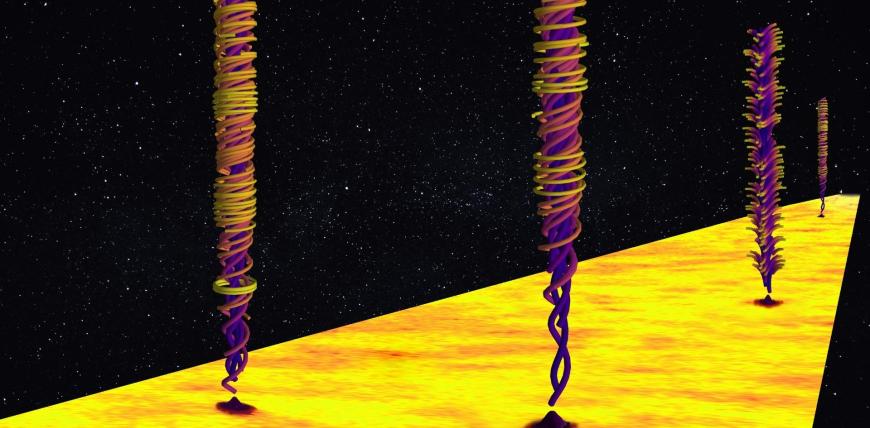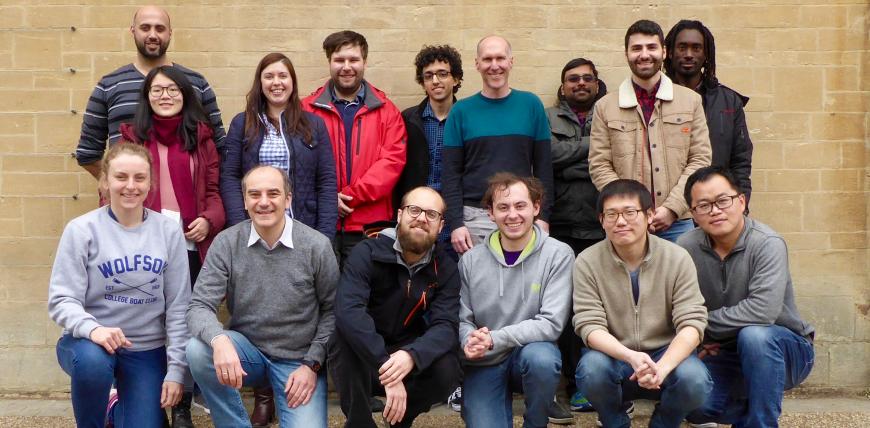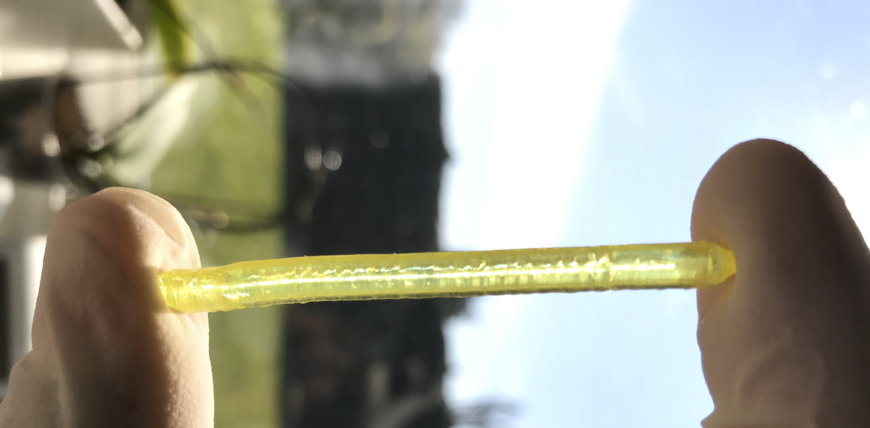
Advanced Device Concepts for Next-Generation Photovoltaics
Enabling key scientific discoveries and important major technical advances to pave the way for the next generation of PV technologies.

Advanced Functional Materials and Devices (AFMD) Group
We are working on advanced functional materials and devices, in particular those based on organic semiconductors and for photovoltaic applications.

Applied Superconductivity
Our research is to understand and promote new superconductors for practical applications as part of the Oxford Centre for Applied Superconductivity.

Chromatin Dynamics
Research in the Gruszka Lab centres on physical and molecular mechanisms underpinning chromatin dynamics during DNA replication.

Computational Condensed Matter Physics Group
We use and develop upon first principles computational modeling methods such as density functional theory and many-body perturbation theory to understand and predict structural, vibrational, electronic, optical and transport properties of materials.

Designer Quantum Materials for Devices
We craft quantum materials with bespoke emergent properties and functionalities, bridging fundamental and device physics, to enable transformative next-generation technologies.

Electronic structures and photoemission spectroscopy
Our research focuses on understanding the behavior of electrons in unconventional materials. We also develop advanced instrumentation that will drive the exploration of critical information on condensed matter systems with new degrees of freedom.

Gene machines
Studies of the mechanisms and machines of gene expression using single-molecule biophysical methods and biochemistry.

Ion channels
Our research is focused on understanding the intimate relationship between ion channel structure and function; we are working to understand their molecular mechanism of operation at an atomic level as well as their role in physiology and disease.

Macroscopic Quantum Matter
Our research concentrates upon the fundamental physics of electronic, magnetic, atomic and space-time quantum matter including the development of instrumentation allowing humans to visualise or perceive quantum phenomena.

Magnetism for Intelligent Devices (MIND)
Our research is aimed at shaping futuristic computing architecture. We are interested in studying the physics, materials, and engineering aspects involved in developing next-generation memory, logic, and brain-inspired computing hardware.

Muons and magnets
Our research involves fundamental studies of emergent phenomena in quantum materials using muon-spin rotation, an experimental technique involving implanting radioactive particles that acts as microscopic magnetometers.

Novel Energy Materials and Advanced Characterisation
Novel energy materials and advanced characterisation

Nucleic acid nanotechnology
We study the physics of synthetic biomolecular nanostructures in order to create disruptive technologies including probes of cellular structure and function, templates for molecular electronics and molecular machinery for atomically precise manufacture
Oxford Molecular Motors
We are currently working on Rotary Molecular Motors. In particular the Bacterial Flagellar Motor and F1FO ATP-synthase. The aim is to try and understand how these living machines work. We use a range of techniques. Molecular motors are tens of nanometre

Oxide electronics
We study novel quantum materials with the potential for integration in a new generation of fast, non-volatile memories and other electronic devices. Our current emphasis is on magnetic oxides which can be controlled by electric fields.

Physics of biological shape: from molecules to organisms and biohybrid structures
Physics and nanomechanics at the interface of biology and nanotechnology, in molecules, cells, tissues (artificial or natural) and whole organisms. Atomic force microscopy. Led by Professor Sonia Contera

Quantum Devices and Biosystems
We are developing techniques and protocols to generate quantum effects in complex systems inlcuding in living systems and are reverse engineering bio-inspired structures in artificial solid-state and hybrid quantum optoelectronic materials.

Quantum magnetism and quantum phase transitions
We explore experimentally emergent properties of quantum magnetic materials and quantum phase transitions using neutron scattering and thermodynamic probes

Quantum magnonics
The quantum magnonics research group develops low-temperature microwave magnetic circuits to probe the physics of magnonic systems at the quantum level.

Quantum matter in high magnetic fields
Our research uses high magnetic fields, low temperatures, high pressures and strain to probe novel electronic, superconducting and topological phases of quantum matter. These studies are combined with ARPES and DFT calculations.

Quantum Optoelectronics
Our group's main interests have been in making optical measurements on wide-bandgap semiconductors and low-dimensional systems such as quantum dots, wires and wells.

Quantum spin dynamics
We explore quantum coherent phenomena in condensed matter spin systems


Semiconductors group
Research in the Herz group explores the fundamental science and applications of semiconducting materials and nanostructures ranging from organic molecules and solids, III-V inorganic semiconductors & nanostructures, to hybrid metal halide perovskites.

Snaith group
The Photovoltaic and Optoelectronic device group is led by Prof Henry Snaith. Our main interest is in metal halide perovskites for photovoltaic and light emitting applications.


Superconducting quantum devices
Our academic research group works on the physics of superconducting circuits and their application to quantum computing.



Thin film quantum materials
Growth of quantum materials in the form of thin films using molecular beam epitaxy (MBE), UHV sputtering, and chemical vapor deposition; their structural, magnetic, and electrical characterization; as well as exploratory device studies.

X-ray and neutron scattering
The group uses X-ray and neutron scattering to investigate novel electronic, magnetic, superconducting and topological materials, with emphasis on emergent phenomena associated with strong electronic correlations.
